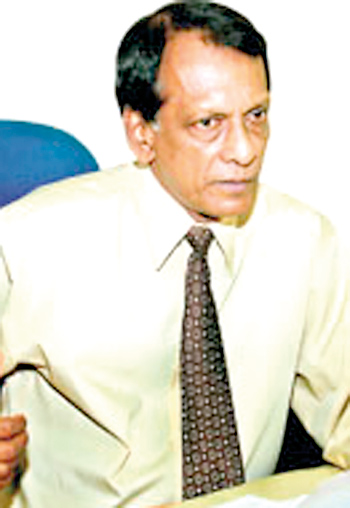News
Conclusions raise more questions on killings than answer their ‘whodunit’
Seven reports compiled by the Udalagama Presidential Commission of Inquiry (PCI) appointed in November 2007 by then President Mahinda Rajapaksa, to investigate and inquire into 16 alleged serious violations of human rights, were presented to Parliament, more than six years after they were completed and handed over to then President Rajapaksa.

Former Supreme Court Judge Nissanka Udalagama
The eight-member Commission headed by retired Supreme Court Judge Nissanka Udalagama, had its mandate abruptly ended in 2009 after it had completed its inquiry into only seven of the cases.
The report was only made public on Tuesday by Prime Minister Ranil Wickremesinghe who presented it to the House, along with another PCI appointed by the former President, to look into similar allegations, namely the Paranagama Commission.
Chief among the seven incidents the Commission reported, include the killing of 17 Aid workers attached to an international NGO in Mutur, the killing of five youth in Trincomlaee, the Sencholi incident and the suicide attack at Digampathana killing 98 security forces personnel.
Killing of 17 Aid Workers in Mutur
The most prominent among the cases is the August 2006 killing of 17 Aid workers attached to international Aid organisation Action Contre Faim (Action Against Hunger- ACF) in Muttur.
The bodies of the 17 Aid workers, which included four females, were found shot dead inside the ACF office in Muttur on August 5, 2006.
The Udalagama PCI questioned senior military and police officers working in the area at the time of the incident, as well as public officials, civil society members and next-of-kin of the victims.
The Commission concluded that, while there is a possibility that the LTTE perpetrated this crime to blame the armed forces, there is a greater possibility that police personnel were involved in the incident.
The Commission has identified the chief suspect, saying that he had “reason to harbour intense animosity against the LTTE for the deaths of his two brothers and the abduction of his sister by the LTTE,” adding this is a “possible motive for committing the crime” by the suspect along with two others.

Remembering the 17 aid workers killed in Mutur
“Their role and culpability with regards to this crime should be fully investigated,” the Commission said.
The Commission also said there is a remote possibility that a person or persons having access to the weapons missing from the Mutur police post during this period, could have perpetrated this crime.
It noted that the Mutur massacre took place just two weeks following the Mavil Aru incident and that, it was a “volatile, dangerous, tension filled scenario” that existed during this period.
The Commission apportioned blame on ACF officials for being negligent, which also contributed to the tragedy, saying there is “clear negligence on the part of ACF and the lack of knowledge of the prevailing ground situation” at the time in Mutur.
The Commission recommended that ACF pay the next of kin 10 years salary commuted from the last salary received by the victims, as the Rs 400,000 ACF paid as compensation to the families is totally inadequate.
Killing of Five students in Trincomalee
The Udulagama PCI, in its report on five youth including two undergraduates being shot dead in Trincomalee town, in January 2006, concluded the Police investigation into the incident was in a “negligent manner”, and no comprehensive investigation has been carried out into the case either.
“This case has highlighted the glaring weaknesses of the investigation process carried out by the Police at the time of the incident and thereafter,” it said.
The Commission questioned the former Inspector General of Police- Chandra Fernando, as well as police and navy personnel stationed in Trincomalee at the time, saying that, “taking into consideration all the facts in the case, there are strong grounds to surmise the involvement of uniformed personnel in the commission of this crime.”
Killing of 98 SF personnel in Digampathana
The Udulagama Commission in its inquiry into the suicide bomb attack on a bus carrying navy personnel at Digampathana in October 2006, blamed several navy personnel tasked with providing security at the transit vehicle park at Boraluwela where the attack took place, of dereliction of duty, on the day of the incident.
“The cab used by the Commanding Offer of the convoy, which is equipped with communication equipment and an explosive jammer,” is usually parked at the entrance to the park to prevent entry of any vehicles. However, at the time of the incident, the cab was not in place and the relevant navy personnel too were not in place.
Had the security arrangements at the park been tighter and the usual arrangements been in place, there attack could have been avoided or the damage minimised,” the Commission said.
Death of 51 persons at Sencholai in August 2006
The Udulagama Commission, in its findings into the incident in which 51 schoolgirls and three others were killed during an air operation by the Sir Lanka Air Force (SLAF), concluded that “an air attack by the SLAF on a legitimate military target, at a time when the LTTE had renewed its attacks on the security forces in violation of the Ceasefire Agreement, caused the death of the schoolchildren who happened to be at the location”.
“Under the circumstances, the LTTE is responsible for indirectly causing the deaths of the schoolchildren by exposing them to the risk of an air attack on an LTTE technical training facility in a jungle area.
The SLAF cannot be held responsible for carrying out an air attack on a legitimate military target,” the Commission concluded.
It recommended that, as a gesture of reconciliation and recompense, a public building such as a school library be constructed for common use of schoolchildren in the area, and a plaque containing the names of all the children who died, be erected within the premises.

